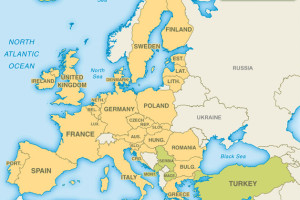Russian Gas: There Is No Alternative For Europe

(Oilprice.com – Colin Chilcoat – May 17, 2015)
The sanctions are now in their second year; the ruble is still not quite itself; and national champions Gazprom and Rosneft are both bracing for what can generously be called a down year. Still, while Russia’s political relationship with the west continues to be redefined, the broader element of codependence remains relatively unchanged – though its worth is hotly disputed. Nowhere is that dispute more pronounced than in the energy sector.
To be sure, Gazprom is in trouble. Last year, the gas giant saw its profits fall 70 percent to $3.3 billion. Through the first three quarters of 2014, Gazprom deliveries fell 3 percent, 13 percent, and 8 percent to Europe, former Soviet republics, and domestic consumers respectively. Its debt burden is up and opportunities for long-term credit are few. Moreover, its legal woes are growing by the day. Recent antitrust filings from Poland and Ukraine join the European Commission’s (EC) April charges that could cost the company up to 10 percent of its global turnover.
For its part, Europe – more specifically, the European Union – is still attempting to define the terms of its own energy security. Plans for the 28-member bloc to unite in an energy union are still a go, though only marginally more clear than when they emerged. In a recent statement at the European Economic and Social Committee’s Plenary Session, Energy Union commissioner Maros Sefcovic described the goals of the union as follows: a fully integrated energy market; energy efficiency above all else; decarbonization; a commitment to R&D; and securing supply through solidarity and trust.
Much has been done to achieve the first four objectives. Interconnectors are popping up throughout the continent and the EC, along with the European Investment Bank, have launched two new financial instruments to drive investment into energy efficiency and climate action projects. Solidarity however, has been difficult to achieve.
That is nothing new for the European Union. Hardliner positions against Russia and calls for greater transparency (EU oversight) have only served to highlight the unsurprising diversity of national interests in the economic bloc. To take a controversial example, Hungary and Greece, among others, are struggling to see the economic benefits of sanctions against Russia. Brussels has gone to great lengths to present a unified front when it comes to the Ukraine crisis, but some members are not convinced of the strategy.
Securing supply is an even greater headache. The shale gas revolution in Europe has turned out to be anything but. The majors have pulled out of Poland and Ukraine – two of the more promising countries – though marginal hopes still remain in Denmark and the UK.
US liquefied natural gas is still years away, and even then is unlikely to satisfy Europe’s thirst. Cheniere Energy’s Corpus Christi LNG is the only prospective terminal to have signed contracts with Europe. By 2018 at the earliest, the terminal will deliver about 7.3 billion cubic meters (bcm) of LNG annually – or approximately 1.7 percent of Europe’s demand.
Turkmen gas – via the southern corridor – is not expected until 2019. Turkmen officials believe deliveries could account for between 2 and 7 percent of Europe’s annual demand. Russia’s Turkish Stream pipeline is expected to be operational in 2016, though it is unclear whether or not infrastructure on the Greek side will be ready then.
In the meantime, the EU and Sefcovic will broker an interim Russia-Ukraine gas deal to last until a Stockholm arbitration court rules on Gazprom and Naftogaz’s debt dispute. A positive result there would, for a time, reduce the risk of any supply stoppage. Nearly 20 bcm of gas has already transited through Ukraine this year.
Russian gas is here to stay. Not because the EU’s Energy Union is still far from the solidarity it seeks, but because the alternatives don’t make sense.
Fittingly, on May 13, Centrica, owner of British Gas, extended a gas supply contract with Gazprom’s UK-based subsidiary Gazprom Marketing & Trading. Gazprom will now deliver 4.16 bcm per year to the UK until at least 2021 – an increase of 70 percent from the previous deal.
